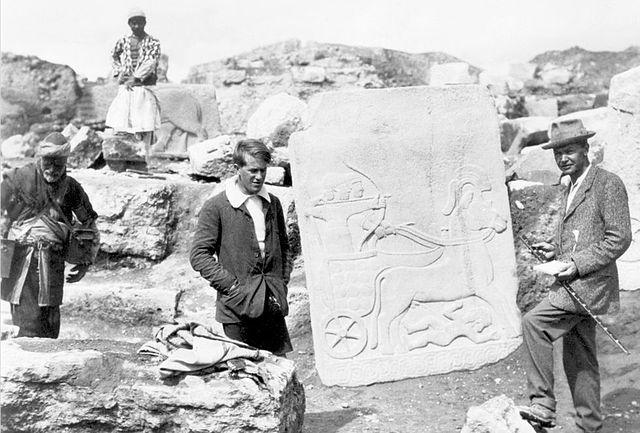Carchemish, also spelled Karkemish, was an important ancient capital in the northern part of the region of Syria. At times during its history the city was independent, but it was also part of the Mitanni, Hittite and Neo-Assyrian Empires. Today it is on the frontier between Turkey and Syria.
Early Hittite carving found by T. E. Lawrence and Leonard Woolley (right) in Carchemish.
T. E. Lawrence and Leonard Woolley (right) in Carchemish, Spring 1913
Basalt lion head from the monument to King Katuwa at Carchemish, now in the British Museum
Yariri (r.) and Kamani (l.), resp. regent and future-ruler of Carchemish
Mitanni, earlier called Ḫabigalbat in old Babylonian texts, c. 1600 BC; Hanigalbat or Hani-Rabbat in Assyrian records, or Naharin in Egyptian texts, was a Hurrian-speaking state in northern Syria and southeast Anatolia with Indo-Aryan linguistic and political influences. Since no histories, royal annals or chronicles have yet been found in its excavated sites, knowledge about Mitanni is sparse compared to the other powers in the area, and dependent on what its neighbours commented in their texts.
Cylinder seal, c. 16th–15th century BC, Mitanni
Cuneiform tablet containing a letter from Tushratta of Mitanni to Amenhotep III (of 13 letters of King Tushratta). British Museum
Cylinder seal, c. 1500–1350 BC, Mitanni







